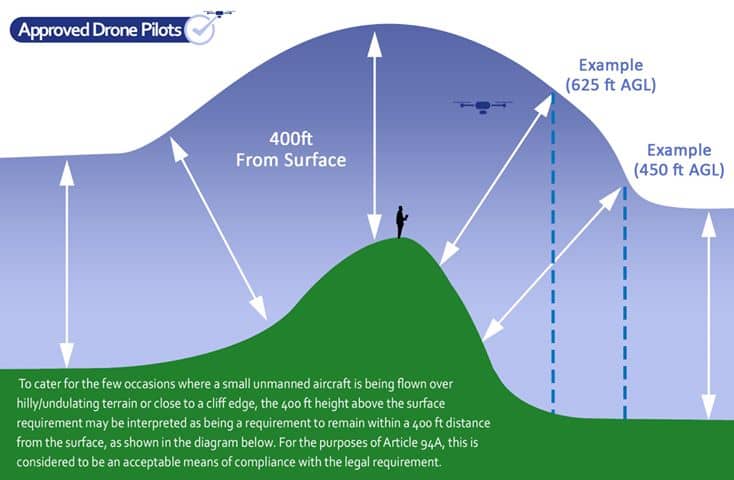So just completely IGNORE what the FAA said? interesting. I'd suggest asking the FAA, they were very clear about it. Or. not, your choice because the rule does not say directly below in the elevation part. But let's ignore that as well. I mean it really strikes me that NO one else will ask the FAA, and instead go on their own assumptions. If you won't ask the authority, i.e. the FAA, then you really shouldn't be spreading misinformation. This isn't facebook.
An email from an anonymous clerk at the FAA doesn't carry as much weight as the laws and regulations, in my book. If you get a signed memo from the General Counsel, or a court decision, or any other formally published ruling, I'll pay more attention. Until we have that, I'll trust the words that are in the carefully worded laws and regulations.
When they express altitude limits as "Above Ground Level", they don't use the term "distant from ground", or "beside ground".
If a Beechcraft is at an altitude of 10,000 ft MSL, and a Boeing is at an altitude of 12,000 ft MSL, how far above the Beechcraft is the Boeing? Most would say the Boeing is 2,000 feet above the Beech, whether the planes are separated by 10 feet horizontally or two miles horizontally.
Imagine a hilltop at 2500 feet MSL. If I'm flying at an altitude of 2499 feet MSL and 500 feet to the side of the peak, am I 500 feet above the peak? Or am I one foot below the peak and 500 feet to the side?
I contend that the word "Above" is measured in the vertical direction, and horizontal distance doesn't matter.
Congress is fully capable of writing what they mean, and they could have written 49 USC 44809 (a)(6) to say "the aircraft is flown within a distance of 400 feet or closer to the nearest ground". But they chose not to. They wrote "the aircraft is flown from the surface to not more than 400 feet above ground level".
Nobody at the FAA has the authority to override Congress.
I'll grant that there's a possibility they may have meant something different from what they wrote. And I'll surely grant that the actual people in charge of enforcement may not care so much about enforcement in such unusual topographical cases.
But I believe the law says what it says, until a court issues an opinion that says the law says something other than what it says.
















